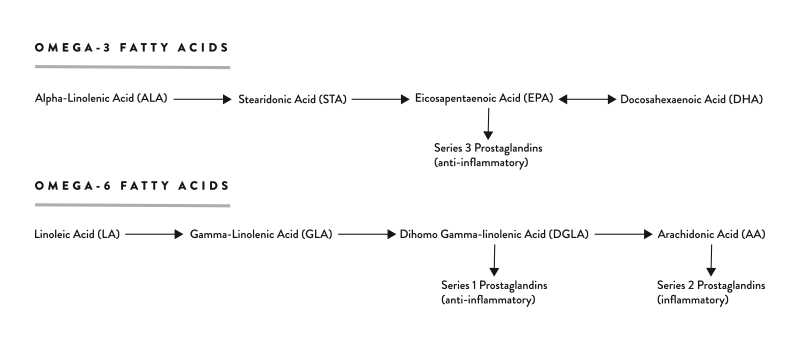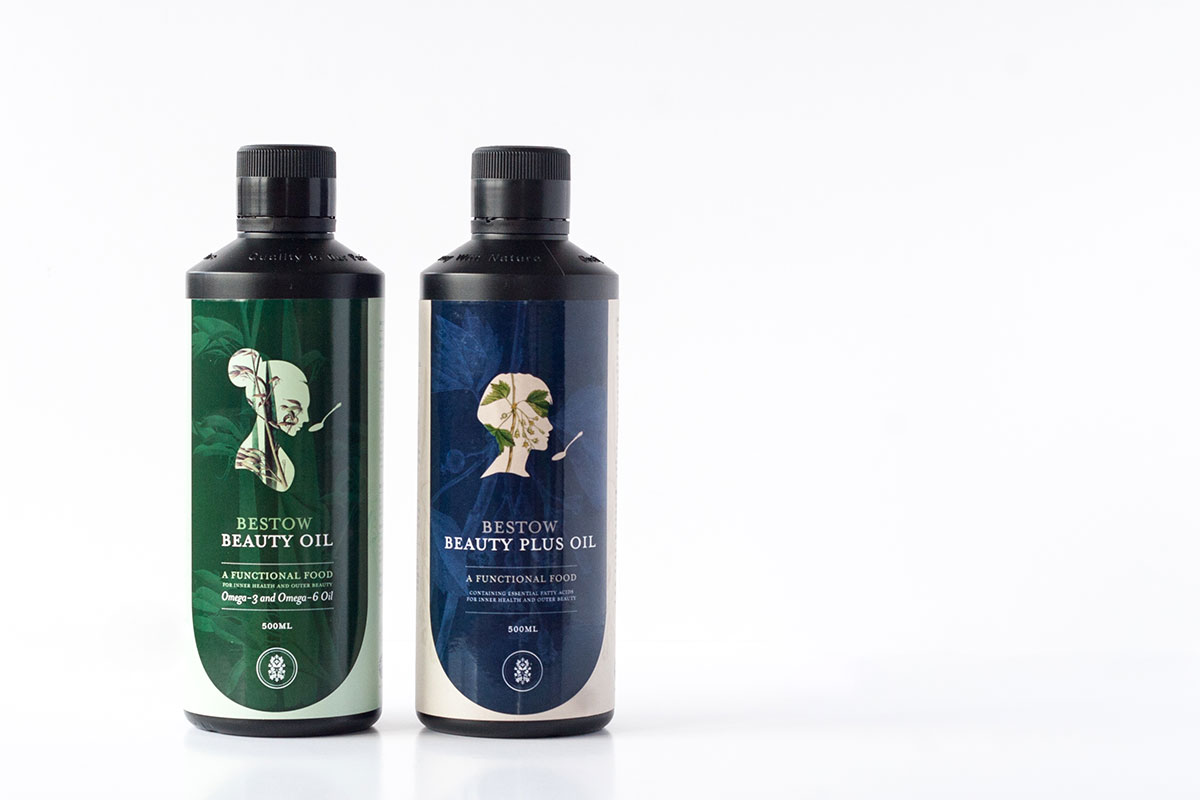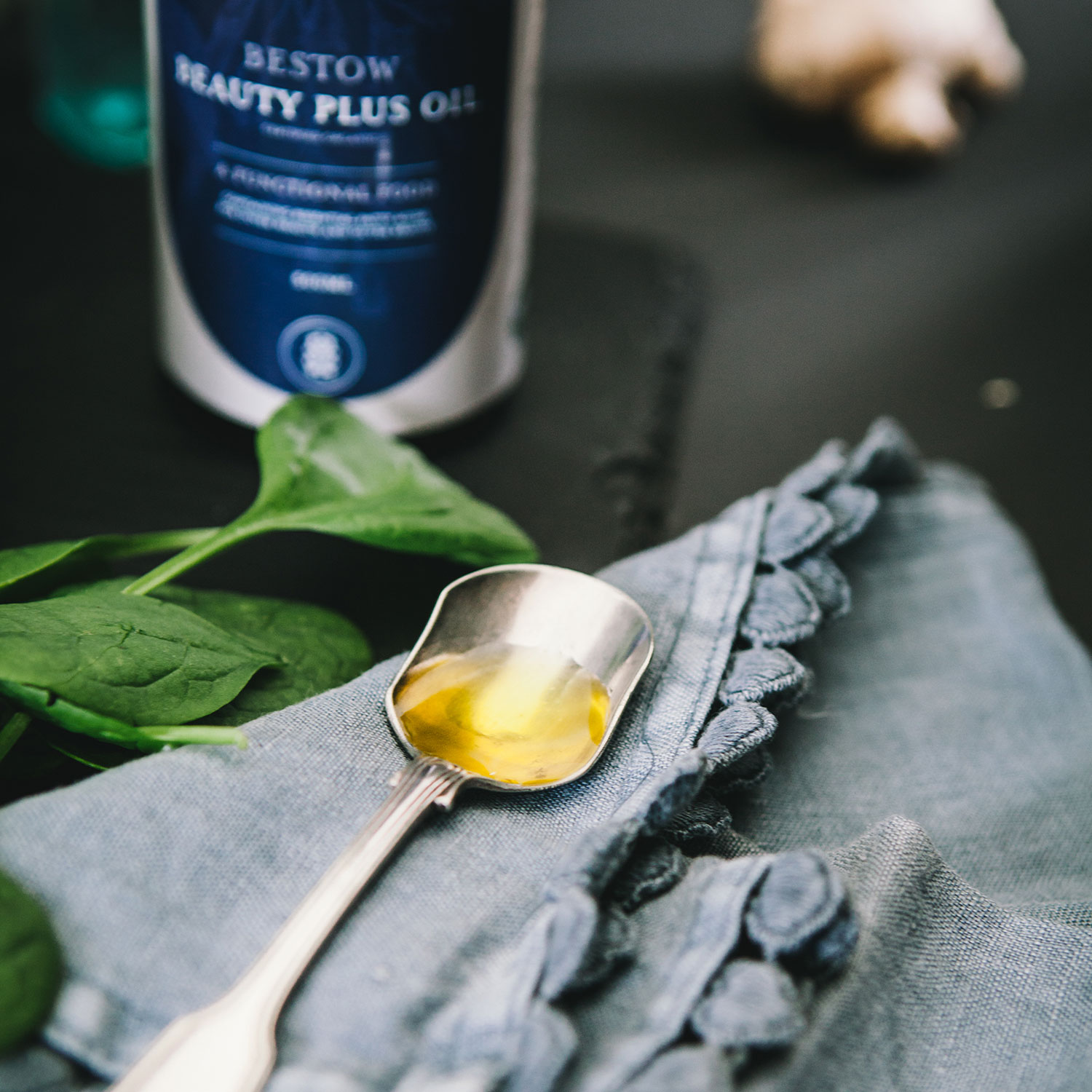Why I’m Standing By Omega-6 | Janine Tait, Dermonutritionist
I assume you’ve heard the claims that Omega-6 fuels inflammation?
To be honest, I’m feeling increasingly frustrated about the mis-conceptions surrounding Omega-6. So, I’ve decided to do something about it. In this article I share my beliefs about Omega-6 and the research and first-hand experiences that have shaped them.
So, here goes.
It has long been accepted by many that Omega-3 and Omega-6 are both important Essential Fatty Acid’s (EFAs) for health and wellbeing. EFA’s are a vital nutritional component in the treatment of skin disorders, which has been at the heart of my work for the last 20 years as a holistic skincare therapist, educator and dermo-nutritionist.
But somewhere along the way, Omega-6 got a bad rep for being pro-inflammatory and is sometimes viewed now with side-ways looks of suspicion.
THEORY VS PRACTICE
I am not sure where this message about Omega-6 originated from, but there is a strong body of research that contradicts the pro-inflammatory claim. Perhaps, more importantly, it contradicts what I have witnessed in-clinic in over two decades of working holisitically to heal skin disorders. The proof, as they say, is in the pudding.
But, let’s step back a few decades.
In the late 1990’s I discovered the missing link between skincare and nutrition and began to transform skin disorders using a holistic approach. In those early days, my Janesce colleagues and I only ever recommended an Omega-6 rich oil to our clients who were suffering from skin disorders like acne or eczema. We didn’t understand the importance of Omega 3 back then so we didn’t prescribe it, but interestingly enough, the skin would still heal.
WHAT DO YOU SEE?
I remember when the message first filtered through that Omega-6’s were inflammatory. I freaked out and immediately rang my mentor, Janesce founder and naturopath, Janine Sarre-Smith. I asked, “Are we doing the wrong thing?” In her calm way, she said to me, “What do you see in clinic, Janine? What happens to your client’s skins when you give them Omega-6?”
I paused and thought about it. Most skin disorders share a common theme – inflammation. Whether it is the redness of acne, the irritation of perioral or the red hot appearance of rosacea; the common denominator is very visible inflammation. What I saw with my clients was that when I prescribed omega-6, this inflammation would slowly regress as the skin healed. That was my answer.
Now, you could argue that I was working from many angles to heal their skin, and you’d be right. I was using anti-inflammatory botanical actives topically, supplying the key nutrients required internally and removing the lifestyle factors that undermine skin health. So perhaps the skin healed in spite of the omega-6?
I can see how you would think that. But what was really interesting was that my Janesce colleagues and I noticed that even if our client did absolutely everything we asked but didn’t take their Omega-6 oil, their progress would stop in its tracks. It seemed that the Omega-6 had to be present in order for the other factors to play their part. It was only after reintroducing the oil that their skin healing continued.
TRUST YOUR FIRST-HAND EXPERIENCE
I want to encourage skincare therapists to trust their in-clinic experiences. Do not under-estimate the advantage and tacit knowledge you have as a skincare practioner who works closely with skin year in and year out. You can see what does and doesn’t work in practise, not what should and shouldn’t work in theory.
So, experience taught me that omega-6 had an anti-inflammatory affect on skin disorders and led me to ask my next question: “why was that?”
WHY EFA’S ARE VITAL FOR SKIN HEALING
EFA deficiency is one of the most common causes of skin problems. When present, EFA’s moisturise the skin from the inside out by nourishing the skin cells at the deepest layer of the epidermis. As this cell progresses to the upper layers of the skin it releases its beautiful oils creating plump, supple, glowing skin. An EFA deficiency can present as either very oily, very dry skin or a compromised barrier and will exacerbate any inflammatory skin disorder. This is true of Omega 3 and Omega 6.
The Particular Skin Benfits of Omega-6
However, Omega-6 has a very important skin-specific fatty acid that Omega-3 does not contain – linoleic acid. Linoleic acid is the the primary omega 6 fatty acid (the first link in the chain) and is a key component of an essential ceramide that is required for healthy skin barrier function. Without linoleic acid this ceramide does not form and the skin cannot protect itself from environmental irritants, resulting in an increased risk of skin disorders developing.
Linoleic acid is also required for healthy sebaceous flow. A deficiency can result in open and closed comedones, which exacerbates acne. Clearly, our skin disorder clients were deficient in this important fatty acid, otherwise we wouldn’t see such a strong correlation between omega-6 supplementation and improvement in skin health.
That’s not to say that omega-3 is not important, of course. It is a very anti-inflammatory oil and its value in working with skin disorders cannot be denied. It’s just that omega-6 has what omega-3 does not, namely Linoeleic Acid, the skin-hero of the EFA family.
WHERE DID OMEGA 6’S BAD REP COME FROM?
Being like a dog with a bone at this point, I still wanted to answer the question:
“But where does the idea that omega 6’s are pro-inflammatory come from?”
I think this chart gives us a clue as to how this mis-conception has become so popular.
 As you can see, Omega 3 looks at safe as houses because it only has one production pathway and this results in localised hormones with an anti-inflammatory effect.
As you can see, Omega 3 looks at safe as houses because it only has one production pathway and this results in localised hormones with an anti-inflammatory effect.
Omega-6, on the other hand, has two potential production pathways. The first results in the production of Series 1 prostaglandins (PGE1) which are localised hormones with an anti-inflammatory and anti-clotting effect. So far, so good.
The second pathway results in the production of Series 2 prostaglandins, which are inflammatory and clotting. People see the pathway leading to pro-inflammatory PGE2 and LTBR and freak out. However, what they don’t realise is that the body will only produce those anti-inflammatory acids, if it needs them.
WHEN IS INFLAMMATION AN ADVANTAGE?
Pause for a moment to think about it. When might a pro-inflammatory compound be helpful and even necessary? If we are wounded, we need clotting and inflammation to heal the wound and prevent us from bleeding out. This pro-inflammatory pathway option is actually vital for our survival. Once the crisis has passed, the body needs to return to an anti-inflammatory state for healing and repair.
Good quality omega-6 oils are capable of moving between these two states to our advantage. i.e. They can produce anti-inflammatory acids when needed, and then go back to producing anti-inflammatory acids when the crisis has passed. However trans-fats and saturated fat sources of omega-6 will always go down the pathway resulting in the production of Series 2 prostaglandins and will indeed be inflammatory.
What conclusion should we draw from this?
I propose that instead of asking: “Should I prescribe omega-6 to my clients?”, we should be asking “Am I prescribing a good quality omega-6 oil to my clients and ensuring it is accompanied by good quality source of omega-3 oil as well?
RESEARCH YOU CAN TRUST
So what does the research say about the link between inflammation and omega-6? A well known study by Walter C. Willett, an American physician and nutrition researcher,examining the relationship between omega-6 consumption and the risk of coronary heart disease also investigated the potential link between omega-6 and inflammation (1).The results of the study found that consuming omega-6 decreased your risk of developing heart disease. It also showed that omega 6 does notincrease the levels of inflammatory markers in the blood.
Other studies have found that diets high in omega-6 sources have a stronger anti-inflammatory affect on the body compared to diets high in saturated fat.This certainly backs up the results I see in clinic where we are dealing with visible, measurable inflammation that dramatically reduces with the introduction of omega-6.
In addition, researchers at the Harvard School of Public Health investigated 126,233 participants from two prospective cohort studies, the Nurses’ Health Study and Health Professionals Follow-Up Study (2). The study had a large sample size and undertook repeated and validated measurements of diet and lifestyle over an extended period of follow-up (up to 32 years).
The study found that higher intakes of saturated and trans fats (the bad fats found in chips, fried foods, meat fats etc.) were associated with a greater risk of mortality. In contrast an increased intake of polyunsaturated fats (the healthy fats including omega 3 and 6 found in flaxseed and safflower oil, salmon, avocados etc.) were associated with a lower risk of premature death from any cause including cardiovascular disease, cancer, neurodegenerative disease and respiratory disease.
What About Balancing Omega-3 and Omega-6?
Another common misconception is that we need to have an optimum ratio of omega-6 to omega-3 fats. This speculation of an optimum ratio has not been supported by evidence in humans (3). In fact, The Harvard College of Public Health states that the healthiest populations have an abundance of both omega-6 and omega-3 in their diets.
When I first produced and formulated Bestow Beauty Oil as a skin-friendly EFA supplement, I incorporated both omega-3 and omega-6 oils sourced from organic flaxseed and safflower oil. For a decade now, Bestow Beauty Oil has been supporting many women’s skin health and healing as part of a holistic skincare strategy.

WHAT IS THE KEY TAKE-AWAY?
The upshot of all this is that we need to prescribe both omega-3 and omega-6 to our clients for skin health. The evidence – both in repuatable research and in our hands-on experience in clinic does notsupport the popular misconception that omega-6 is pro-inflammatory.
I feel we need to look to more common irritants like gluten, sugar, alcohol and processed foods as a source of inflammation in our clients’ skins.
But, that is a blog post for another day…

Janine Tait is New Zealand’s leading dermo-nutritionist, the New Zealand distributor/educator for Janesce Skincare and the founder of Bestow Beauty, a wellness company supporting skin transformation through skin nutrition boosters, recipes and rituals.
REFERENCES
1. Willett WC. The role of dietary n-6 fatty acids in the prevention of cardiovascular disease. J Cardiovasc Med. (Hagerstown). 2007; 8 Suppl 1:S42-5
2. Mozaffarian D, Ascherio A, Hu FB, et al. Interplay between different polyunsaturated fatty acids and risk of coronary heart disease in men. Circulation. 2005; 111:157-64
3. “Specific Dietary Fats in Relation to Total and Cause-Specific Mortality,” Dong D. Wang, Yanping Li, Stephanie E. Chiuve, Meir J. Stampfer, JoAnn E. Manson, Eric B. Rimm, Walter C. Willett, and Frank B. Hu, JAMA Internal Medicine, online July 5, 2016, doi:10.1001/jamainternmed.2016.2417
- April 24, 2018
- 1



